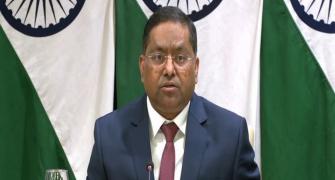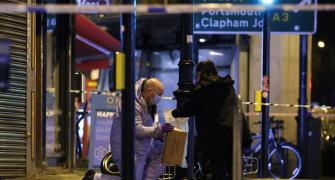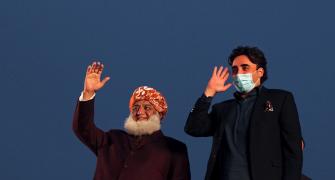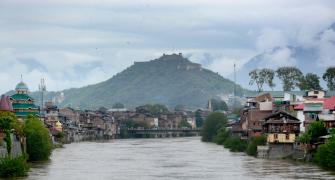Barely hours after life in the city was thrown totally out of gear, almost unnoticed, the first train left Churchgate, the main terminus of the suburban Western Railway. Just how did the authorities manage to achieve this?
Western Railway Divisional Railway Manager Satya Prakash explains how his department deals with an emergency.
"We have a control room that functions all 24 hours. When anything untoward happens the information reaches the control room first. A medical relief coach is dispatched immediately to the scene. The coach has all medical facilities including an operation theatre."
"It is manned by policemen of both the Railway Protection Force and Government Railway Police and has doctors, paramedics and nurses. It is stationed at Bombay Central (another Western Railway hub) and will reach any spot in the line within 30 minutes," he said.
There is also local machinery in place.
"All stations have a list of local hospitals that they will call in case of an emergency," Prakash explained. "Every station has an ambulance. All the staff who are at the stations and trains have experience in first aid. The hospitals will not only alert their staff but also send their own ambulances to the spot."
Once the preliminary information is collected by the control room, it morphs into a rescue mission centre. The Mumbai police, BrihanMumbai Municipal Corporation, Mumbai fire brigade, state secretariat and the Rail Bhavan, the Union Railways headquarters in Delhi, are all alerted.
"We are connected to all of them over a hotline. We keep all of them informed at all times," Prakash said.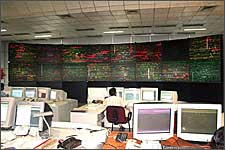
In an emergency like a bomb blast, it is the police that have the maximum responsibility. Not only do they have to make sure that medical help reaches the victims but make sure it is done without destroying evidence.
While the Railways look after the injured, the police swing into action, identifying the dead if there is any casualty.
The fire brigade not only helps in putting out fires caused by the blast but also in rescuing the injured. The municipal authorities help in clearing the debris and clear the approach roads if they are blocked or flooded.
The state secretariat in Mumbai and Rail Bhavan in Delhi help in making decisions where coordination between central and state authorities are necessary.
After medical help, the next step is damage control, Prakash said.
As the tracks are blocked, the road is used. Manpower is raised from all sources. Cranes and cutting equipment are rushed to the spot. The train is cleared from the track.
"As the police need evidence for their investigation, they do not allow us to clear the tracks immediately. So we have to wait for them to give the go ahead. On July 11, 2006, it took a lot of persuasion to get their permission to clear the tracks. We had to call the chief minister and only then did they allow us to proceed," Prakash said.
While normally it would have taken two hours for the Railways to clear the tracks, it took them six hours on July 11. The police had to gather all the evidence within four hours.
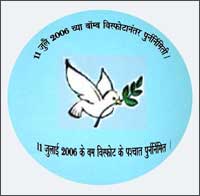 Another important step to follow during an emergency is to switch off the power supply.
Another important step to follow during an emergency is to switch off the power supply.
This is to prevent trains from colliding in the chaos.
There is an emergency train that has a crane and other equipment to deal with any emergency. "There is one such train for every 200 km of railway track," Prakash said.
The coaches damaged in the July 11 explosions were with the police for a month before they were allowed to be repaired. Even now not a single one has been fully restored. One will be ready for the anniversary. It will have a special poster to identify it.
D A Solanki is the Chief Train Controller at the control room at Bombay Central.
"We can virtually see all trains from here," he said. "We can get all inputs from the site of the disaster. We know where the trains are in relation to the stations, railway gates and thus know how to reach there fast. Every train has its own ID, you can see it from here. Even if a track becomes inoperable because of flooding we can see it from here."
Another Chief Train Controller A K Shukla explained: "Whenever anything goes wrong, the first thing that happens is bunching of trains. We are in touch with the station masters, train drivers, guards and control cabins along the tracks. All trains are stopped where they are."
Once the position where the incident has occurred is located, the authorities check the nearest diversion point. Those trains, which are stranded in a particular loop, are left as they are. The ones behind the diversion point are given an alternate path.
Prakash's first job is to ensure that the trains start running as soon as possible, whatever the problem be.
"This is a city of millions. The trains carry a bulk of the traffic. Any disruption of services might lead to other crises. So even when there is a bomb blast, after medical help is given, my priority is getting services started."
"If the damaged coach is obstructing a track, we will cut off the protruding metal. We will move the coach if it is possible. If not we will throw it off the track. We managed without seven damaged coaches by using spare coaches. They were not enough. So we converted the 12-coach trains to 9-coach trains," he said.
So, the next time there is an emergency on Mumbai's railway tracks, trust Satya Prakash and his colleagues to come to your rescue. If Mumbai's citizens haven't already helped you, that is.
Photographs: Uday Kuckian

